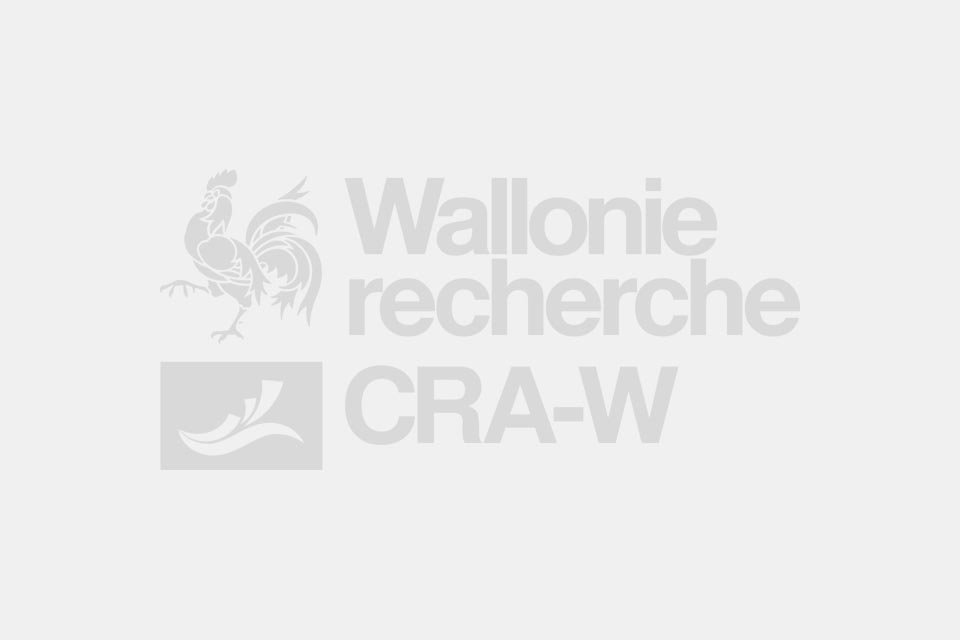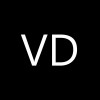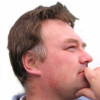Context
Ruminants are able to transform the fibrous biomass in products of high nutritive value that are milk and meat. However, this transformation of plant proteins into animal proteins is rather low (30 to 35% for a Belgian Blue White bull).
To improve the effectiveness of plant nitrogen utilization by ruminants is interesting at different levels : (1) a better use of local protein swards can limit the dependence of local beef production towards foreign countries and (2) a limitation of the nitrogen losses through the urine can decrease the pressure exerted by ruminant breeding activities on the environment.
For the ruminant nutrition, the Dutch protein feeding system DVE/OEB commonly used in Belgium allows to adjust the protein supply by taking into account the nutrition of the rumen micro-organisms. So, a positive OEB value allows to an excess of degradable nitrogen in the rumen, which will results in an increase of the nitrogen rejections in the environment. Conversely a negative OEB value would translate a deficit of degradable nitrogen in the rumen, such a diet couldn’t allow to an optimal functioning of the rumen. In the same idea and on short period, trials led to the Gembloux Agricultural University (FUSAGx) showed that the ruminant was able to recycle a significant part of ureic nitrogen to feed the micro-organisms present in his rumen.
Objectives
The objective of this study is to evaluate the long-term effects of the nitrogen recycling (distribution of diet characterized by a negative value OEB) at Belgian Blue White young bulls. The diets tested within this framework contained ensiled beet pulps supplemented with cereals and commercial feedstuffs to obtain a OEB value of the diet that was equal or lower to zero. The evaluation of the rations was obtained by the measurement of the animal performances (weight gain and intake), by the measurement of the evolution of blood parameters linked to the nitrogen metabolism and by the evaluation of the quality of produced carcasses and meats. The nitrogen balance was measured for the both tested diets.Results obtained
For the both diets, the live weight gains are high (higher than 1.3 kg/day) and characteristic of the BBB breed. Bull’s growths obtained with the OEB negative diet are similar to those obtained with the OEB null diet (1.284 vs 1.277 kg/day respectively). There is no difference between diets as regards voluntary intake. However, the voluntary intake of OEB negative bulls tends to decrease over the time (figure 1).Regarding the carcass quality, the OEB negative diet tends to provide carcass with a pH post-mortem slightly higher (5.92 vs. 5.77, P = 0.075). This is mainly due to 1 carcass with a higher pH value (6.61).
Based on the composition of the 8th rib, the intermuscular fat (%) tends to be higher for animals fed the OEB negative diet (P = 0.065). There are no effects of the diet on meat characteristics. The technological quality and chemical composition of meat are similar for the both tested diet.According to the results of the blood analysis, parameters linked to the good functioning of kidneys (creatinin) and liver (hepatic enzyme tested : aspartate amino-transferase or AST) seem not influenced by the diet. The intake of the OEB negative diet doesn’t disturb the metabolism of experimental bulls. In accordance with the results of previous trials (FUSAGx trials), the plasmatic urea appears lower for the OEB negative diet (P>0.01).The use of OEB negative diet allows to decrease (P<0.05) the nitrogen losses in the environment (table 1).On the basis of our results, the averaged daily nitrogen release of a bull fed with the OEB negative diet is 16.2 g N per day lower than those fed with the OEB null diet. On a year basis, the nitrogen loss decreases about 5.9 kilograms. Given nitrogen directive imposed by Europe, this difference is not negligible.
Contribution
The Farming Systems Section places the experimental cattle stables (individual systems of trough feeding) and its knowledge in term of fattening of meat young bulls at the disposal of the project.
Partners
Faculté universitaire des Sciences agronomiques de Gembloux, Unité de Zootechnie et Unité Technologies des Industries agro-alimentaires(FUSAGx).
Société Coopérative Agricole de la Meuse (SCAM).
Local breeders : lending of experimental animals.
CRAW off coordinator
Ir DECRUYENAERE Virginie
CRA-W – Farming Systems Section
Rue de Serpont, 100
B-6800 Libramont-Chevigny
Belgium
Tel. : +32 (0)61 23 10 10
Fax : +32 (0)61 23 10 28
Email : decruyenaere@cra.wallonie.be
Funding
- DGARNE






